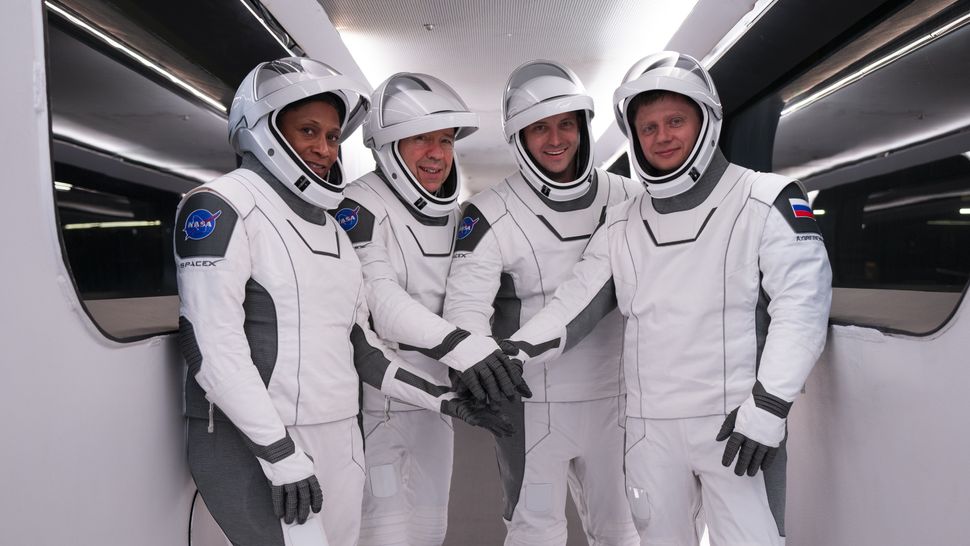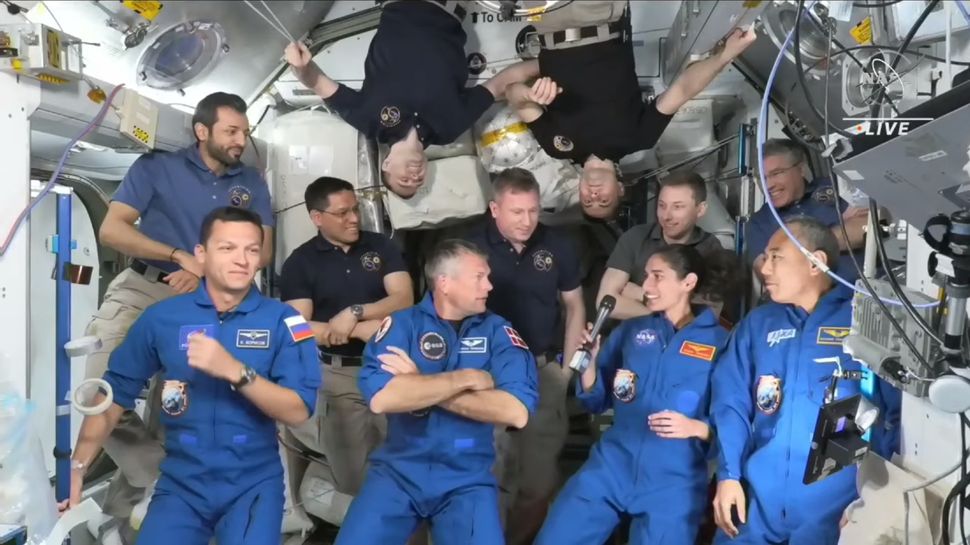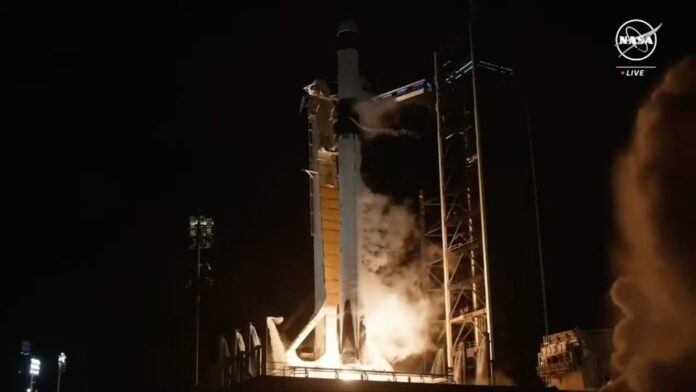On a thrilling evening of March 3rd, 2024, SpaceX successfully launched its eighth operational crewed mission for NASA, carrying the Crew-8 astronauts towards the International Space Station (ISS). The mission, dubbed Crew-8, marks a significant milestone in space exploration, paving the way for further scientific advancements and human presence beyond Earth’s atmosphere.
Liftoff and a Seasoned Capsule
A powerful Falcon 9 rocket roared to life at 10:53 p.m. EST, carrying the Crew Dragon spacecraft named Endeavour and its precious cargo: four astronauts eager to embark on their spacefaring adventure. The launch proceeded flawlessly, with the first and second stages separating smoothly after a brief ascent. The first stage then made a captivating return, landing gracefully at Cape Canaveral, Florida, marking SpaceX’s 204th consecutive successful booster landing.
Endeavour, on the other hand, is no stranger to space travel. This seasoned capsule previously soared on the historic first crewed test flight of the Crew Dragon back in May 2020, carrying astronauts Bob Behnken and Doug Hurley to the ISS. Since then, it has completed several successful missions, including Crew-2, Crew-6, and the private Ax-1 mission. Crew-8 marks Endeavour’s fifth space voyage, solidifying its position as the “fleet leader” within the Crew Dragon program.
A Diverse and Experienced Crew

The four astronauts entrusted with piloting Endeavour to the ISS are a diverse and highly qualified group. Leading the mission is Commander Matthew Dominick, a seasoned pilot with extensive experience in various spaceflight roles. Alongside him is Pilot Michael Barratt, embarking on his third spaceflight, bringing valuable expertise and leadership to the crew. Mission Specialist Jeanette Epps, making her spaceflight debut, adds a fresh perspective and diverse skillset to the team. Completing the international crew is Alexander Grebenkin, a Mission Specialist from Russia’s Roscosmos space agency, further reinforcing the collaborative spirit of space exploration.
ALSO READ: Air Leak in Russian Module On The ISS: No Crew Threat, Says NASA
Joining the Crew and Embarking on New Adventures

Upon arrival, Crew-8 will be warmly welcomed by the current residents of the ISS, the four astronauts of Crew-7. After a brief handover period, during which the incoming crew will be familiarized with the station’s systems and ongoing research, Crew-7 will depart for their return trip to Earth, tentatively scheduled for no earlier than March 11th.
Once fully settled, Crew-8 will dive into a meticulously planned schedule packed with scientific exploration and station maintenance. Their itinerary boasts over 200 science experiments, encompassing diverse fields like human biology, space medicine, and Earth observation. These experiments will be conducted in the unique microgravity environment of the ISS, offering valuable insights that could pave the way for future deep space exploration endeavors.
A Six-Month Mission Packed with Science
Crew-8’s six-month stay aboard the ISS will be anything but uneventful. The astronauts are scheduled to conduct over 200 scientific experiments and technology demonstrations, all while experiencing the unique conditions of microgravity. These experiments hold immense potential, not only for furthering our understanding of the universe but also for laying the groundwork for future human exploration endeavors beyond Earth’s orbit.
Research areas encompass various disciplines, including human biology, space medicine, materials science, and Earth observation. By studying how the human body adapts to microgravity, scientists aim to develop strategies to ensure the health and well-being of astronauts on longer-duration missions. Additionally, material science experiments will test the behavior of different materials in space, paving the way for the development of more robust and efficient technologies for future spacecraft.
Looking Towards the Future of Space Exploration
The Crew-8 mission represents a crucial step in the ongoing journey of human exploration into the cosmos. The scientific data gathered during their mission will offer invaluable insights into the challenges and opportunities that lie ahead. As NASA continues its Artemis program, aiming to land the first woman and the next man on the Moon, the knowledge gained from Crew-8’s research will be instrumental in ensuring the success of future lunar missions and, ultimately, the dream of human exploration of Mars.
Conclusion
The launch of Crew-8 marks a significant milestone in space exploration, not only for the scientific advancements it facilitates but also for the international collaboration it exemplifies. As these four courageous astronauts embark on their six-month mission aboard the ISS, we stand in awe of their dedication and the collective efforts that made this mission possible. The future of space exploration appears brighter than ever, fueled by the unwavering spirit of human curiosity and the power of collaboration.
